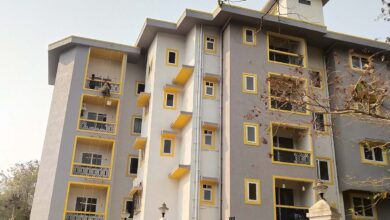The Impact of Soil Conditions on Concrete Stability
Concrete is one of the most reliable and widely used building materials, known for its strength, durability, and versatility. However, the stability and longevity of concrete structures are significantly influenced by the underlying soil conditions. As a premier concrete company in Aurora, CO, Aurora Concrete Services understands the critical role soil plays in concrete stability. In this blog, we will explore the impact of soil conditions on concrete stability, the common issues that arise from poor soil conditions, and how to address these challenges effectively.
Understanding Soil and Its Importance
Soil is the natural material found on the earth’s surface, composed of minerals, organic matter, air, and water. The characteristics of soil vary widely depending on its composition, moisture content, and density. These factors directly affect the behavior of soil under load and its interaction with concrete structures.
Types of Soil
- Clay: Clay soils are fine-grained and can hold a significant amount of water. They tend to expand when wet and shrink when dry, causing instability.
- Silt: Silt soils have smaller particles than sand and larger than clay. They are prone to erosion and can be unstable when wet.
- Sand: Sand has larger particles and drains well. However, it may lack cohesion, leading to shifting under load.
- Gravel: Gravel soils are coarse and stable, providing good support for concrete structures.
- Loam: Loam is a mixture of sand, silt, and clay, offering balanced properties for supporting concrete.
Impact of Soil Conditions on Concrete Stability
1. Soil Settlement
Soil settlement occurs when the ground beneath a concrete structure compresses and shifts. This can lead to uneven surfaces, cracks, and structural instability. Settlement is common in areas with clay or silt soils, which are prone to significant volume changes due to moisture variations.
Example:
For a concrete driveway in Aurora, CO, improper soil preparation can lead to settlement, resulting in cracks and uneven surfaces that require frequent repairs.
2. Expansive Soils
Expansive soils, such as clay, expand when they absorb water and contract when they dry out. This continuous cycle of expansion and contraction exerts pressure on concrete structures, leading to cracks and movement.
Example:
Concrete repair in Aurora, CO, often involves addressing damage caused by expansive soils that exert force on foundations and slabs, causing them to crack and shift.
3. Poor Drainage
Soils with poor drainage properties, like clay and silt, can retain water and lead to excessive moisture around concrete structures. This can weaken the soil and the concrete itself, leading to instability and damage.
Example:
A concrete driveway in Aurora, CO, built on poorly drained soil may suffer from water pooling, causing the subgrade to weaken and the driveway to crack and settle.
4. Erosion
Erosion occurs when water or wind removes soil particles, leading to voids and instability beneath concrete structures. Sandy and silty soils are particularly susceptible to erosion, which can undermine the foundation and cause structural damage.
Example:
Concrete repair in Aurora, CO, may involve addressing erosion issues that have caused voids under driveways, patios, or foundations, compromising their stability.
Addressing Soil-Related Challenges
Effective soil management is crucial for ensuring the stability and longevity of concrete structures. Here are some strategies to address soil-related challenges:
1. Soil Testing and Analysis
Before any concrete construction, it’s essential to conduct thorough soil testing and analysis. This helps determine the soil type, moisture content, density, and other characteristics that influence its behavior under load. Soil testing provides valuable information for designing appropriate foundations and subgrades.
2. Proper Site Preparation
Proper site preparation is critical for creating a stable base for concrete structures. This includes:
- Excavation: Removing unsuitable soil and debris.
- Compaction: Compacting the soil to increase its density and stability.
- Grading: Ensuring proper drainage by grading the site to direct water away from the concrete.
3. Use of Geotextiles and Geogrids
Geotextiles and geogrids are synthetic materials used to reinforce soil and improve its load-bearing capacity. They help distribute loads more evenly and prevent soil movement, reducing the risk of settlement and erosion.
4. Drainage Solutions
Implementing effective drainage solutions is essential for managing water around concrete structures. This includes:
- French Drains: Installing French drains to redirect water away from the concrete.
- Slope Grading: Ensuring proper slope grading to prevent water from pooling around the concrete.
- Permeable Pavers: Using permeable pavers to allow water to infiltrate the ground and reduce surface runoff.
5. Use of Stable Fill Material
Using stable fill material, such as gravel or crushed stone, can enhance the stability of the subgrade. These materials provide excellent drainage and load-bearing capacity, reducing the risk of settlement and movement.
6. Regular Maintenance and Inspection
Regular maintenance and inspection of concrete structures can help identify and address soil-related issues before they become significant problems. This includes checking for cracks, settlement, and drainage issues and performing timely repairs.
7. Professional Expertise
Working with a professional concrete company in Aurora, CO, like Aurora Concrete Services, ensures that your concrete projects are designed and executed with a thorough understanding of soil conditions and their impact on stability. Professional contractors have the expertise to implement effective soil management strategies and ensure the longevity of your concrete structures.
Why Choose Aurora Concrete Services?
- Expertise: Our team has extensive experience in managing soil conditions and ensuring stable concrete construction.
- Quality Materials: We use high-quality materials and advanced techniques to enhance the durability and performance of your concrete structures.
- Comprehensive Services: From new installations to concrete repair in Aurora, CO, we offer a full range of services to meet your needs.
- Customer Satisfaction: We are committed to providing exceptional service and ensuring your complete satisfaction with our work.
Conclusion
The stability and longevity of concrete structures are heavily influenced by the underlying soil conditions. Understanding the impact of soil settlement, expansive soils, poor drainage, and erosion is crucial for preventing damage and ensuring the durability of your concrete projects.
By conducting thorough soil testing, implementing proper site preparation, and using advanced techniques like geotextiles and effective drainage solutions, you can mitigate the risks associated with challenging soil conditions. Regular maintenance and professional expertise are also essential for maintaining the stability and integrity of your concrete structures.
As a trusted provider of concrete repair in Aurora, CO, Aurora Concrete Services is dedicated to helping you achieve durable and stable concrete solutions. Whether you need a new concrete driveway in Aurora, CO, or professional advice on managing soil conditions, our experienced team is here to assist you. Contact us today to learn more about our services and how we can help you ensure the stability and longevity of your concrete projects.



